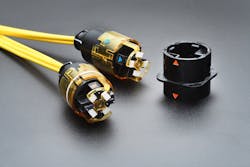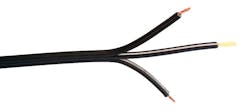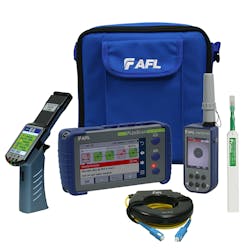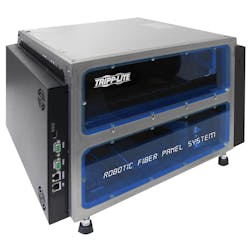Fiber-optic innovations have a long history of awards recognition
As the deadline (May 6) nears for submissions into the 2022 Cabling Innovators Awards, it’s likely that the eighth year of the program also will be the eighth year in which fiber-optic projects and products are featured prominently among honorees.
Launched in 2015, the Cabling Innovators Awards program honors projects and products that display innovative qualities in one or more of seven areas: 1) an innovative approach; 2) value to the user; 3) positive impact on the customer; 4) sustainability; 5) meeting a defined need; 6) collaboration; and 7) making a difference.
Over the years, many fiber-optic-based products and projects have gained deserved recognition in the Cabling Innovators Awards. Here’s one example from each year.2015: Powered Fiber Cable System from TE Connectivity (now CommScope). The Powered Fiber Cable System brings network connectivity as well as power to any location. It includes a hybrid cable that combines fiber communications and copper power cables within one housing. The system also includes a power supply, a media converter that enables PoE, and a PoE extender that allows distances up to 3 kilometers. The system is used in applications like small cells, WiFi access points, surveillance cameras, digital signage and others. In 2015 Jade Communications of Boca Raton, FL designed the Powered Fiber Cable System into a golf course. The system allowed the course to turn up a 36-camera surveillance system, including cameras that are more than 10,000 feet from the power source. Jade Communications estimated a savings of more than $140,000 in network buildout costs for the project compared to alternative communications-and-power solutions.
2020: The SWK Connector from Swick Designs (pictured at top of page). The SWK Connector is a self-cleaning, self-protecting connector that its creator Swick Designs explains “makes supplemental cleaning and dust caps things of the past. The connector’s cylindrical shape allows for quick on-the-fly polarity and key flips, while its extended handle allows for connector operation away from the patch panel.” Key features of the SWK Connector include the ability to support between 24 and 192 fibers; self-cleaning capability to eliminate dust and debris; a self-protecting shield shroud; low insertion loss and return loss; high density; quick polarity flips and gender changes; easy reach and push-twist connect operation. The SWK product line includes patented patch panels and fanout cables to adapt the connector to LC, MPO, and QSFP.
What fiber breakthroughs will we honor with 2022 Cabling Innovators Awards? That remains to be seen. But rest assured, fiber projects and products will be notable parts of this year’s program, as they have been in the past.
If you have been involved in a project, or offer a product, that exemplifies innovation, consider entering the Cabling Innovators Awards. After the May 6 submission deadline, entries will go through our judging panel’s evaluation process. We’ll announce honorees at the BICSI Fall Conference and Exhibition in September.






